Opinion
Illegal water release from Randenigala, Rantambe reservoirs?
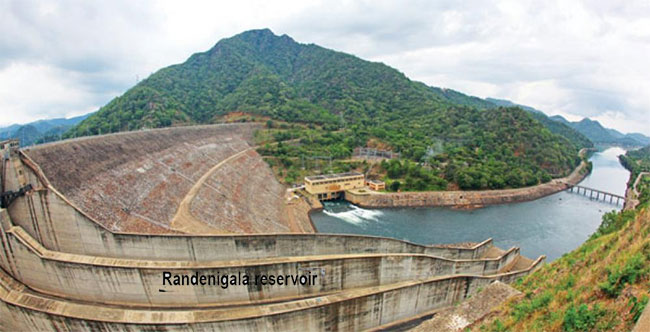
The above alarming and shocking news item says, ‘The Criminal Department [CID] is probing a complaint that water was released from the Randenigala and Rantambe hydropower reservoirs by a group of CEB personnel to facilitate the purchase of power from the private sector. The investigation was launched following a complaint lodged by the Chairman of the Ceylon Electricity Board with the IGP.”
Being interested in the energy sector, especially the affairs of CEB, which I handled during my tenure at the Ministry for Power and Energy for nearly two decades, I happened to read a lengthy article, titled ‘WATER SPILLAGE FROM RESERVOIRS – IS CEB RESPONSIBLE’ appearing in The Island of 16 December 2021, by Chris Ratnayaka, one time an engineer attached to the CEB and later snatched by the World Bank, knowing his capabilities, and appointed as Senior Power Engineer, reviewing power sector operations in about 17 developing countries and now an internationally recognised Consultant on Energy, has this to say, and I believe it is relevant to the issue at hand.
“Responsibility for Water Level Management -The articles place the sole blame for spillage on the CEB’s, System Control Centre [SCC] engineers, They seem to be unaware that water level management of the main reservoirs [namely the Mahaweli Complex] is the responsibility of the Water Management Secretariat [WMS] not the CEB, WMS has representation from the CEB, Water Board, Irrigation, Mahaweli and more. The release policy, every week from every reservoir, is issued by the WMS and the CEB cannot store or release water through unilateral decisions. So, the accusation on the CEB is misplaced!”
Chris Ratnayaka has given ten reasons and the above is the first and the rest are as follows: 2. Drawdown curves, 3. Optimal dam design envisages some spilling, 4. Reservoir Heights Deviated from Optimum 5. Difference between operational ponds and storage reservoirs, 6. Historical Performances, 7. Maximum hydro capability Vs System Demand. 8. Contractual issues with respect to private [thermal] power, 9. Contractual issues with respect to Private Renewable energy and 10. Exigency Situations, the sudden rains last November in Sri Lanka was quite unprecedented.
I request the CID and all concerned, including the Minister for Power and Energy, and newly appointed Chairman CEB, to get a copy of the above informative knowledgeable article, and see what relevance it has on the present accusation against certain CEB engineers of release of water to facilitate the purchase of power from private suppliers.
G. A. D. SIRIMAL
Boralesgamuwa
Opinion
Speaker’s Wig : Why split hairs over a piece of horsehair?
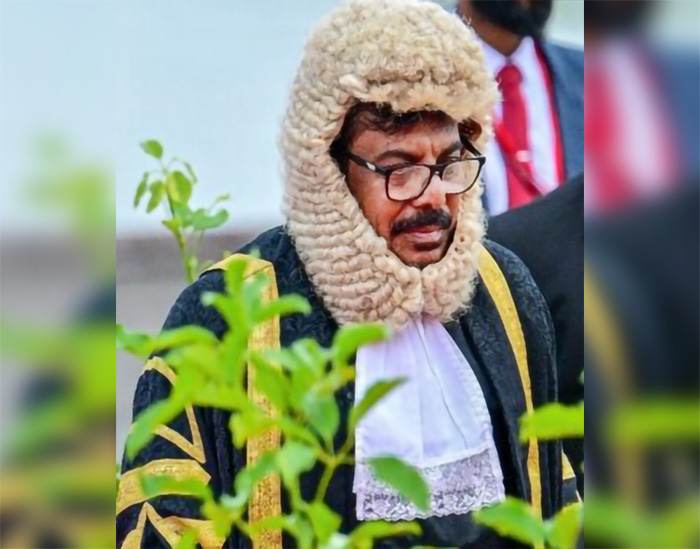
By Gomi Senadhira
I was surprised to read a few comments published in the newspapers and social media about the way the Speaker Ashoka Ranwala wore his speaker’s wig at the ceremonial opening of the parliament. Some of which were extremely unwise, for example, one such comment was, “This shows how stupid the entire parliament is. Please teach the Speaker to wear the wig properly. Looks like he just got off from a motorbike. Has he not seen a Speaker before in his life?”
On ceremonial occasions, the Speaker of Sri Lanka’s parliament wears a black robe trimmed with gold lace and a full bottomed wig. This is a practice we have copied from the British House of Commons where the Speaker wore a black and gold robe over court dress with a white waterfall cravat and a full bottomed wig. In addition to the speaker the clerks, who are the senior officials in the House of Commons, also wore bob wigs and long gowns. Fortunately, we did not adopt that dress code for the officials. Unfortunately, the speaker copied this British fashion from the seventeenth century and continues to follow it.
In 1992, the Speaker Betty Boothroyd, the first female speaker of the British House of Commons, ditched the wig because she “…couldn’t have a good laugh disguised in something so imperious.” Since then her successors too have followed her style and have further simplified other aspects of their costume and started to wear plain black gowns over lounge suits. Furthermore, in 2017 the UK parliament’s Speaker John Bercow ruled that wigs and formal dress will no longer be worn by parliamentary officials in the Commons, ending a 300-year-old practice.
However, the current Commons Speaker Lindsay Hoyle, who was elected to the post in 2019, decided to go back to the old tradition and wear his full ceremonial attire for the State Opening of Parliament by the queen. He also had also directed the Clerks of the House of Commons to wear their bob wigs. So, the Clerks have once again started to wear their wigs. But when it came to the Speakers own wig there was a slight hitch. The horsehair ceremonial hair piece which was last worn by Speaker Bernard Weatherill before his retirement in 1992 had gone missing and the House of Commons officers failed to find it even after an extensive search within the Palace of Westminster. A new wig would have cost over one thousand pounds (£1,320 plus VAT to be exact) to British tax payers. So, if one Googles Lindsay Hoyle, it is possible to find a picture of him walking through the Members’ Lobby in the House of Commons during the State Opening of the Parliament by the Queen, wearing the formal Speaker of the House of Commons regalia, a black and gold robe over court dress with a white waterfall cravat…. but no wig!
That means, it has been three decades since the speaker of the UK’s House of Commons last wore this “imperious” piece of horsehair. In our neighbourhood, the Speakers of the India’s Central Legislative Assembly used to wear robes and wigs while presiding over the meetings of the Assembly from 1921 to 1946. But in 1946 Speaker G.V. Mavalankar stopped that practice. In Australia, the traditional outfit of the Speaker of the House of Representatives included a black academic gown, a jacket, a lace collar and a full wig. But the last time an Australian Speaker wore the full ceremonial outfit was in 1983. The Speaker’s wig, I understand it is on a “loan” to a museum, where it really belongs.
So, isn’t this the proper time to stop splitting hairs over how to wear this ceremonial piece of horsehair and ask why the speaker should continue to wear this glaring symbol of colonial inheritance?
(The writer, a retired public servant and a diplomat, can be reached at senadhiragomi@gmail.com)
Opinion
Remembering Senator Ratnayake – a response
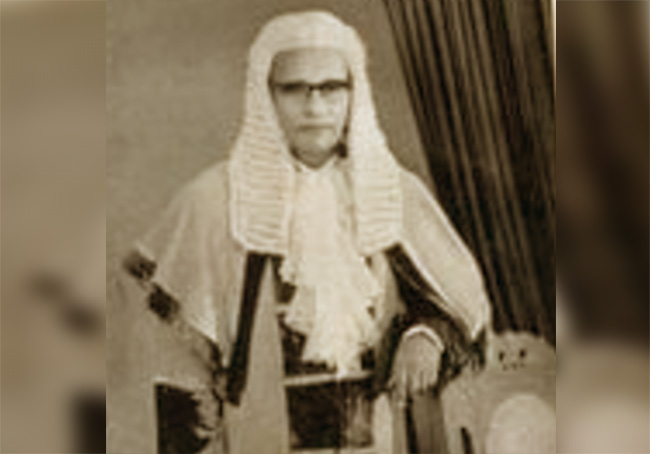
I refer to Maneesha Seneviratne’s excellent tribute to Senator A. Ratnayake in The Island of 25 Nov.
One of the most valuable events in A. Ratnayake’s career stands as a powerful reminder for those who fervently compete for positions in governments and within political parties driven by sheer greed.
This is about how he became the first Cabinet Minister of Food, Co-operatives, under D S Senenayake. Ratnayake had often been a vocal critic of D. S. Senanayake and his policies during their time in both the State Council [in 1936-47] and later in Parliament. He had, on occasion, even supported Marxists like Dr. N. M. Perera and Philip Gunawardene, representatives of Ruwanwella and Avissawella electorates, respectively. Ratnayake believed this history of dissent would make his chances of being offered a ministerial position highly unlikely.
To his surprise, one evening, the phone rang. When he answered, the familiar voice of D. S. Senanayake greeted him with an unexpected question:
“I say, Rat, how would you feel about joining my Cabinet?”
Ratnayake was momentarily stunned into silence. Regaining his composure, he replied in Sinhala with a hint of humour, “Sir, ara ibba waturata danawa wage ne” (It’s like asking a tortoise to willingly enter the water).
Senanayake burst into hearty laughter, momentarily deafening Ratnayake. Once the laughter subsided, Ratnayake inquired about the portfolio being offered. He expressed a preference for the Education Ministry, noting his extensive experience serving on education committees in the State Council and even acting as Minister of Education.
However, Senanayake was firm. “No, Rat. I want you to handle the subjects I managed during my time in the State Council. Will you honour me by accepting the position of Minister of Food and Cooperative Undertakings? The other part, Agriculture, I want Dudley to take over—he has already agreed. You are the only person I trust to carry forward the plans I initiated, even though you’ve been one of my harshest critics.”
This unexpected offer left Ratnayake both surprised and deeply hounored.
After the first Parliamentary election under the Soulbury Constitution in 1947, D. S. Senanayake gave Sir John Kotelawala a practical instruction. “I say, Lionel, check if we have a majority. If not, see if you can get a few chaps to join the government. The Eastern Province members are the best bet—they always come to Parliament with open minds,” he remarked, laced with humour.
Reflecting on his tenure in the first Parliament, Senator A. Ratnayake once said, “After 16 years of giving the government hell, I found myself on the receiving end—and what an unrelenting opposition it was. Among them were NM and Philip, and, of course, Dr. Dahanayake. Taming that opposition was like trying to humanise hell.”
Dr. Dahanayake, in particular, stood out as one of the most vocal critics of Ratnayake’s policies, challenging and dissecting his decisions with vigour. These spirited exchanges underscored the era’s vibrant democratic ethos and the intense parliamentary discourse that shaped policy and governance.
KKS Perera
Opinion
Handle rice issue diplomatically

It is a well-known fact there is a cartel of a few rice millers with regard to the purchase of paddy and sale of rice in the country. The whole blame for this development should rest solely on the previous dispensations. Those past governments created a situation where ample opportunities were made available to a few wealthy persons with close connections to some powerful politicians of the day, for purchasing paddy from the farmers at very low rates and later sell the milled rice to the consumers at exorbitant prices according to their whims and fancies. Those in authority turned a blind eye to this operation as they benefited from the rice millers. They weakened the state mechanism which had been introduced by the previous government for purchasing paddy and converting such stocks into rice and making available that rice to the people at affordable prices through CWE and the co-operative outlets. The previous governments deliberately sabotaged the operation of this mechanism to pave the way for a few politically and otherwise close rice millers to exploit the rice market in the absence of any competition.
The Paddy Marketing Board was neglected by previous governments. Now this rice miller mafia has become a formidable force even the government cannot control. The moment the government steps in to remedy this situation, the rice miller mafia will go all out to thwart the government’s efforts at controlling the price of rice. These rice millers extend loans to the farmers at the commencement of paddy growing seasons and ensure that the latter sell their paddy only to them at the prices they fix. The indebted farmers have no alternative other than selling produce to those millers at very low prices stipulated by them.
Now the PMB has neglected all its paddy stores and mills, and the government has no money to be released to the PMB for purchasing paddy. The vacuum created by non-involvement by the government in the purchase of paddy offered a golden opportunity to the rice millers to purchase paddy at the prices they desire. This is the sorry state of affairs now prevailing in the country.
What would be the scenario if the government stepped in to solve this problem by using its power? It has neither money nor facilities for storing paddy and operational rice mills for milling the paddy. The rice miller mafia could ensure that there will be no rice in the market, at all. They can afford to do so. Therefore, I feel this is a very delicate issue that has to be handled diplomatically.
The government should come to a compromise with the rice millers wherein the millers will be able to dispose of their stocks of rice in the market at a reasonable price in line with the expenses they have incurred in purchasing paddy. The government should be flexible in deciding the price of rice taking into consideration the expenses incurred in acquiring such stocks of paddy by the millers and persuade the millers to release the stocks of rice they now hold to the market at the revised prices. Retaining the current controlled price of rice will aggravate the situation.
K. M. Suraweera
Veyangoda
-
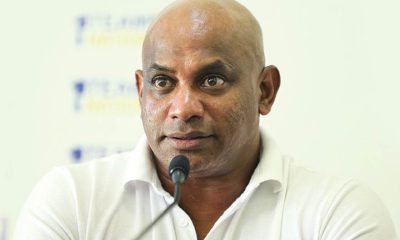
 Sports6 days ago
Sports6 days agoPathum will become world’s best batter, says Jayasuriya
-
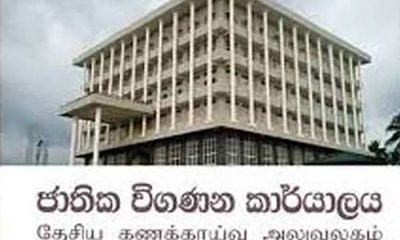
 News5 days ago
News5 days agoAbout 1,000 permits issued to SL migrant workers for electric vehicle imports misused
-

 Sports7 days ago
Sports7 days agoSri Lanka’s cricket revival continues
-
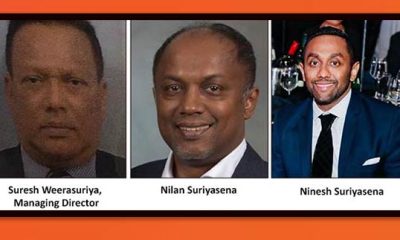
 News6 days ago
News6 days agoGoldi Sands celebrates its 50th anniversary
-

 Editorial6 days ago
Editorial6 days agoSign of capitulation
-

 News5 days ago
News5 days agoTorrential rains play havoc in Jaffna
-

 Features4 days ago
Features4 days agoSri Lankan mannerisms in Ischia, sex in Samoa and Kerala
-
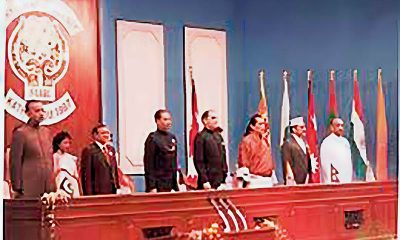
 Features4 days ago
Features4 days agoKathmandu 1987 and Islamabad 1988











